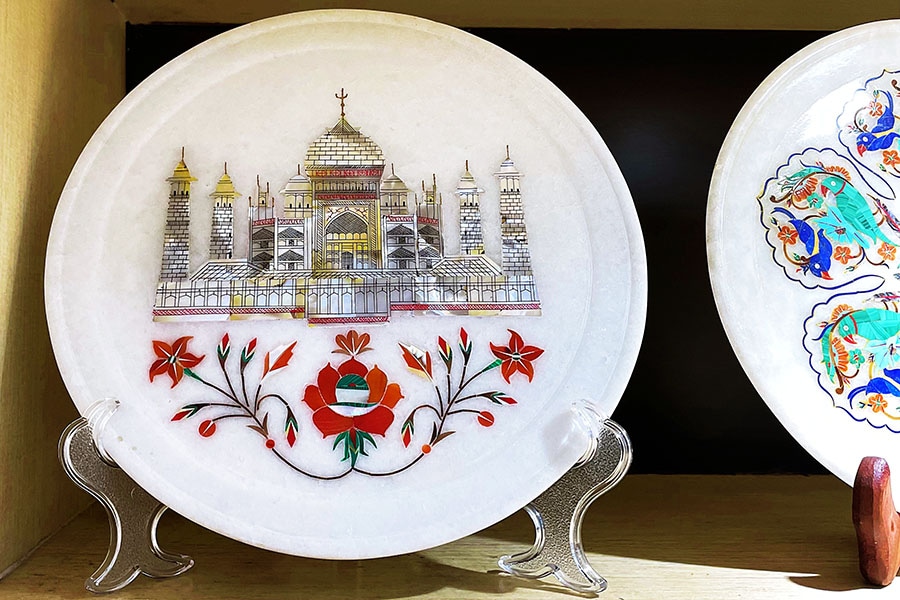
Delving into the soul of Agra, through Parchin Kari
In the city of the Taj Mahal, history, hospitality, and master craftsmanship converge, as artisans continue to breathe life into the Mughal tradition of marble inlay work
 Tajview Agra, an IHCL Seleqtions Hotel, offers the perfect escape to immerse oneself in the timeless allure of the Taj Mahal, all from the serenity and comfort of your own room. Image: Veidehi Gite
Tajview Agra, an IHCL Seleqtions Hotel, offers the perfect escape to immerse oneself in the timeless allure of the Taj Mahal, all from the serenity and comfort of your own room. Image: Veidehi Gite
As dawn breaks at the Tajview Agra, an IHCL Seleqtions hotel, the first slivers of sunlight peek into my suite on the fourth floor. Pulling back the curtains, I'm met with a breathtaking view—the Taj Mahal itself. From this vantage point, the monument built by Shah Jahan, the fifth Mughal emperor, fills my gaze. Inside my suite, every detail pays homage to the iconic monument outside, from the paintings depicting its grandeur, the marble cutlery and bathroom fixtures inscribed with Parchin Kari, to the zig-zag-designed marble flooring mirroring the majestic pillars of the Taj Mahal.
When I reach the Taj Mahal’s eastern gate at 6 am the next morning, kissed by the first light of dawn the Taj Mahal seems to defy time itself, stretching out in a timeless welcome against the canvas of a newly awakened day. My guide, Muzammil Hussain, a certified guide accredited by the Ministry of Tourism of India, tells me: "Emperor Shah Jahan conceived the Taj Mahal not merely as a tomb, but as a paradisical home for his dead wife. He pictured her awakening on the day of resurrection, finding herself amidst this grandeur. Thus, the Taj Mahal epitomises Shah Jahan's vision of Mumtaz's celestial abode."
 As the first light of dawn caresses the sky, the Taj Mahal bathes in golden hues, a timeless embrace of sunlight's kiss. Image: Veidehi Gite
As the first light of dawn caresses the sky, the Taj Mahal bathes in golden hues, a timeless embrace of sunlight's kiss. Image: Veidehi Gite
He adds, "A significant Islamic passage adorns Darwaza-I-Rauza (royal gate), featuring Surah al-Fajr, the 89th chapter of the Qur'an. In essence, it beckons the virtuous into paradise, exemplifying an eternal dwelling for noble souls. This association is why the gate is often referred to as the gateway to heaven.”
He also directs my attention to the Arabic calligraphy adorning the Taj Mahal. “These are sacred couplets from the Quran," he explains, "making the Taj Mahal home to one of the most extensive inscription programs in the Islamic world. There are excerpts from 25 chapters out of 114.” The selection of these verses was far from arbitrary, he says. “They were curated to convey a thematic program, a religious iconography of words akin to the figurative decorations seen in churches of that era. While Islam prohibits the depiction of figures or figurines, it allows for the expression of life's meaning and the afterlife through the Almighty's commandments. These verses encapsulate precisely that."












